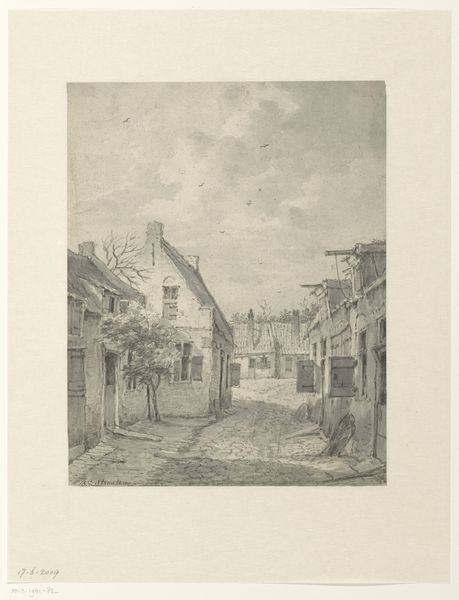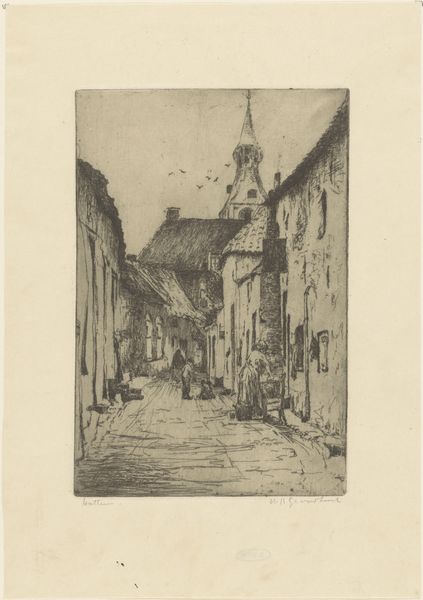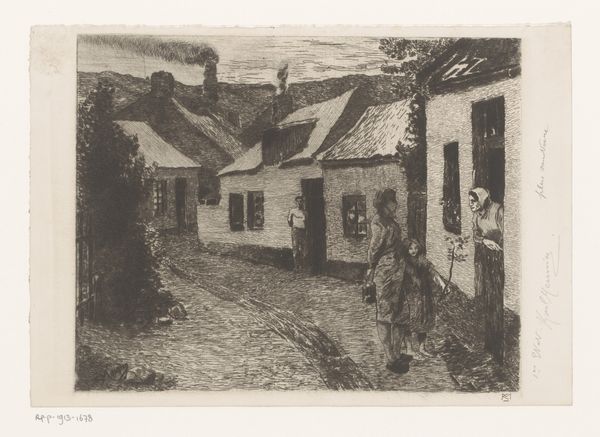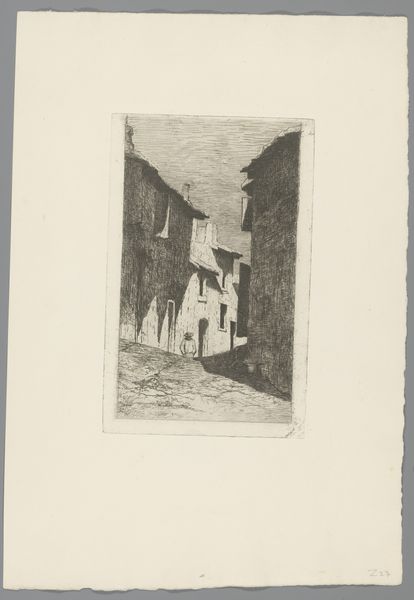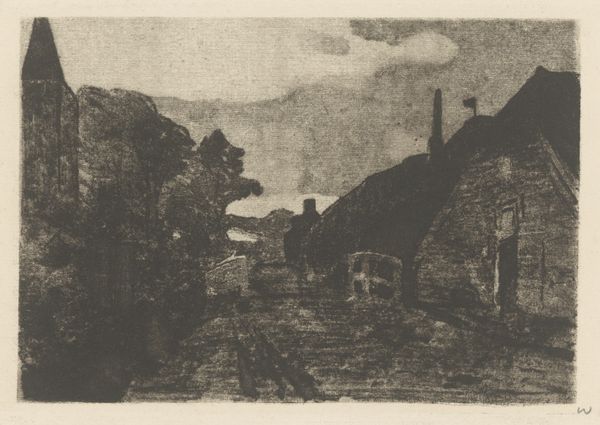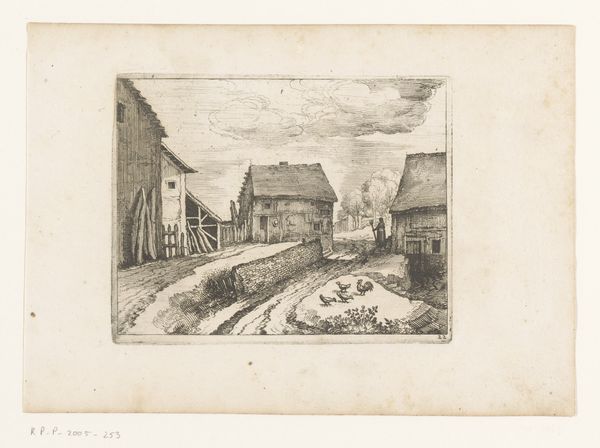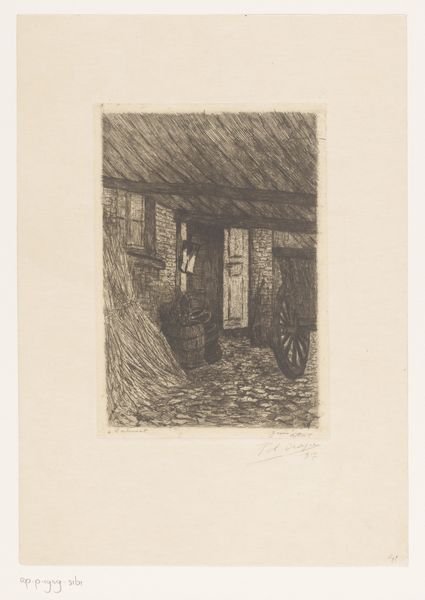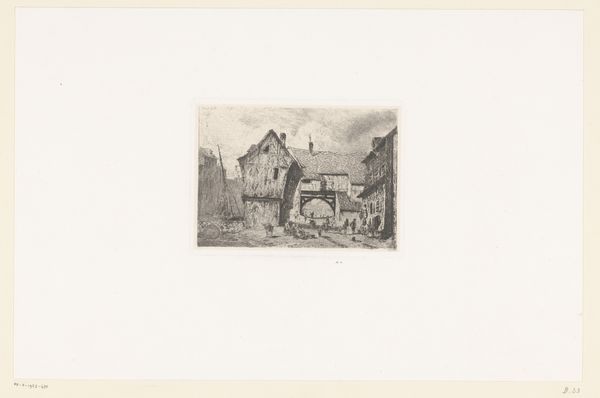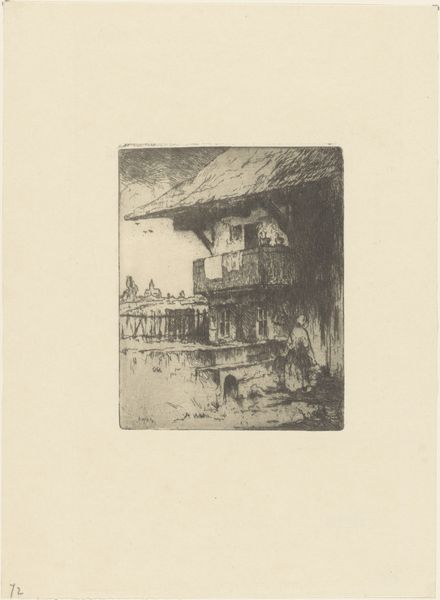
print, etching
# print
#
etching
#
landscape
#
cityscape
#
genre-painting
#
realism
Dimensions: height 305 mm, width 265 mm
Copyright: Rijks Museum: Open Domain
Curator: Let's take a closer look at this etching by Jules Dieudonné. It's entitled "Gezicht op een erf in het oude Schaarbeek," which translates to "View of a Yard in Old Schaarbeek," created in 1879. The print medium allows for incredible detail, doesn't it? Editor: Indeed! My initial impression is one of quiet solitude. The tonality is rather subdued, evoking a certain melancholy. The sharp lines create texture, and it definitely guides your eye down the lane. Curator: And that's what I find fascinating! Dieudonné captured a slice of life in the periphery of Brussels, when Schaerbeek was still semi-rural. The labor involved in daily life is subtly suggested here. The architecture is working-class, utilitarian. Notice the textures of the rough brick, and the wear and tear. This would have been a hard-working environment. Editor: I am drawn to the formal qualities—the use of linear perspective converging towards the church spire on the horizon creates depth, while the contrast between light and shadow defines the forms. I want to talk about that spire for a moment! How that single architectural structure rising far behind those run-down brick houses provides the image with vertical tension! Curator: Precisely! That contrast you describe so well reveals the social dynamics at play. The presence of the church suggests the ingrained influence of religion and perhaps a beacon of hope against the daily grind. It all underscores the experience of the working class at the time and the artist’s relationship to them. How much would Dieudonné identify with this subject, or see himself as a chronicler of his time? Editor: True, and yet the almost photographic realism employed gives it an enduring quality. It moves past being just a social record and becomes something almost timeless. You notice how the etched lines, those physical marks, emulate the actual lines that make up our lived experiences? Curator: So, for me, understanding the print as an object – the copper plate, the acid, the labor involved in producing each print – reveals a story beyond just the image itself. It’s about production, consumption, and social context. Editor: And for me, considering how light, shadow, line and perspective work in tandem allows me to understand, in a visceral, emotional way, something about a very specific place, as if plucked straight from history. Curator: A captivating glimpse into 19th-century Schaerbeek, revealing layers of meaning through its composition and historical context. Editor: I concur. Thank you for providing insight into the material conditions.
Comments
No comments
Be the first to comment and join the conversation on the ultimate creative platform.
